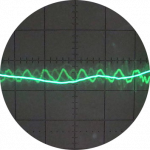How much radiator capacity do I need for an air source heat pump?
Hi
We are looking at installing an ASHP with a 10kW max output at 40degC flow temp.
The installer has recommended new radiators totalling 27kW at the manufacturers stated deltaT50 outputs. I estimate these would produce around 11.5kW at 40degC FT (delta T20), mostly using T33/K3 radiators (I used the HeatGeek estimate of 1.5kw per sq m for T33s to calculate that https://www.heatgeek.com/do-i-need-to-upgrade-my-radiators-for-a-heat-pump/- I have seen a couple of other calculations that seem to be a bit less).
We are quite constrained in wall space and T33s will be a bit intrusive in some places. We do need all the ouput we can get, so radiator capacity is quite important for system performance.
The house is 4 stories and thin, with doors open most of the time and no zones or TRVs, so heat distributes quite easily and we have no problem balancing our existing gas system.
I assume the total radiator output at the desired FT needs to be bigger than the ASHP output, but how much? So long as the heat output is biased towards the lower floors it should naturally even out, so the margin for balancing radiators can be reduced?
Also, how about heat emitted by CH pipe runs? All the pipe runs are well within the heat envelope (albeit in places behind stud walling/ between floors). Ignoring the pipe runs seems too conservative, but how much could be included? I have calculated the theoretical pipe output at 1.3kW at 40degC FT/ deltaT20- it is all 15mm and 22mm copper pipe as it is an old system.
I did find this discussion https://renewableheatinghub.co.uk/forums/postid/20677 but I couldn't see anything in it that quite answered my question!
Thanks for any thoughts.
First question, what's the heat loss of your house?
If by any chance you have a smart meter and can get half hourly or daily gas consumption you can find out from that. If you don't then you will have to fall back on the gigo fabric spreadsheet (which most MCS installers will take as gospel even though it can produce absolute nonsense).
Do you have any of these figures? They drive everything including the ashp size, not the other way round!
10kW is a lot suggesting either a large (>200 sq m) or poorly insulated house or you are somewhere very cold like east coast of Scotland. Is this correct?
As a concrete example my 200sq m house in the south east (design oat -2C) built in the 1930s with subsequent piecemeal and incomplete fabric upgrades, has a loss of 7-7.5kW. The GIGO spreadsheet merchants told me 16kW.
That said if you fit oversized rads you can turn the ft down to improve efficiency, but there is a trade off with aesthetics!
4kW peak of solar PV since 2011; EV and a 1930s house which has been partially renovated to improve its efficiency. 7kW Vaillant heat pump.
Posted by: @simonwhiteleyThe installer has recommended new radiators totalling 27kW at the manufacturers stated deltaT50 outputs. I estimate these would produce around 11.5kW at 40degC FT (delta T20), mostly using T33/K3 radiators (I used the HeatGeek estimate of 1.5kw per sq m for T33s to calculate that
Delta T 20 implies that your desired room temperature would be 17.5C as the mean radiator temperature would be 37.5C at a flow temperature of 40C and return temperature of 35C. I suspect that you might be aiming for a room temperature of 20C in which case delta T would be 17.5C not 20C. There are various formulae for the correction factor - the one I use for delta T of 17.5C is 0.26 which would give you around 7kW. You also have to factor in the 'radiatorgate' scam where manufacturers inflate their claimed outputs. Also the radiators furthest away will probably be cooler than the closest radiators. This may cancel out any heat gain from the pipework. Bigger radiators means lower flow temps, which means better COP. As James says, it is a trade off between COP and aesthetics. Hence why some prefer UFH.
@simonwhiteley - I had a similar conundrum (limited wall space) and for the same reasons ended up with mostly K3s. They do look huge when they first go in, because you are used to seeing something of much smaller bulk, but I have found over time I have got more used to them, and while not pretty, they are no longer an eyesore. I am also vaguely benignly disposed towards them because they are what keep me and my house warm!
The sums for correcting radiator outputs for lower flow temps are straightforward, and there is more than one way to do them. I used a 'correction factor' (for each delta t difference from a mean rad/room delta t 50 multiply by this number) from Stelrad: eg if the delta t is 30, then multiply by 0.513 (this is also a useful rule of thumb, at delta t 30 the rads output is about half what it is at delta t 50). I then set up a spreadsheet to do the calculations using lookup tables, but that was a bit of voluntary overkill on my part, the back of an envelop will do just as well. Just make sure you keep the envelop for future reference!
I also echo @jamespa and @mike-h's comments: you absolutely have to know the heat loss for each room, and beware manufacturers' exaggerated claims. Such claims are sadly the norm in the heating industry.
Midea 14kW (for now...) ASHP heating both building and DHW
Posted by: @cathoderayThe sums for correcting radiator outputs for lower flow temps are straightforward
Many manufacturers give an equation in the following form:
output is proportional to (deltaT)^n
where
deltaT is the mean difference between the rad temp and room temperature
^ means raised to the power of and
n (the exponent) is invariably 1.3 or very close
So if they quote outputs at DeltaT=50, then at deltaT=17.5 the output will be (17.5/50)^1.3 =0.255 times as much.
The reciprocal of this figure (1/.255=3.9) is sometimes called the 'oversize factor'. This is the number by which you have to multiply the calculated load to get the DT50 output required. So if the calculated load is 500W and the oversize factor 3.9, you need a radiator rated for 1950W at DT50. Calculating the oversize factor makes looking through the catalogues easier!
4kW peak of solar PV since 2011; EV and a 1930s house which has been partially renovated to improve its efficiency. 7kW Vaillant heat pump.
@jamespa - I did say there is more than one method! Not everyone is familiar exponents and reciprocals! The Stelrad (there are others) conversion factor table is a more accessible/understandable/intuitive way of getting to the results.
Midea 14kW (for now...) ASHP heating both building and DHW
Posted by: @cathoderay@jamespa - I did say there is more than one method! Not everyone is familiar exponents and reciprocals! The Stelrad (there are others) conversion factor table is a more accessible/understandable/intuitive way of getting to the results.
It wasn't supposed to be a criticism, just additional info. If you are building a spreadsheet, which many do, a formula is more useful than a table! Apologies for any offence caused, this was not intended!
4kW peak of solar PV since 2011; EV and a 1930s house which has been partially renovated to improve its efficiency. 7kW Vaillant heat pump.
@jamespa - I know no offence was intended, and none is taken. Rather, it is a good thing to have more information and methods, people can then choose what suits them.
Midea 14kW (for now...) ASHP heating both building and DHW
Posted by: @simonwhiteleyWe are quite constrained in wall space and T33s will be a bit intrusive in some places. We do need all the ouput we can get, so radiator capacity is quite important for system performance.
Are you aware of Jaga Strada fan-assisted rads? We have them fitted throughout and are very happy. Heat output is much greater per unit area than normal rads and they provide "light cooling" in the summer using chilled water from the HP.
Mitsubishi Zubadan 14kW with Mixergy 210l DHW in 220m2 barn property. 24 solar panels = 9kWp with GivEnergy 5.0kW Hybrid inverter and 19kWh GivE batteries. Jaga Strada fan-assisted rads throughout. Landvac vacuum glazing/triple glazed windows.
@jamespa it is an 1850 solid wall 150sqm in London. I have heat loss calcs coming out of my ears, with a wide range of results- in summary every calc from physical fabric gives a bigger number than every calc from historical gas consumption. In HTC terms, I have answers ranging from 390W to 650W for the house as a whole.
I can reduce heat losses by up to 20% with some changes we are making. We are in a conservation area so a bit restricted.
The pump we are looking at is the 7kw Vaillant but whichever way it will be on the low side- at least in theory as here in inner London I am dubious about the bottom end temps, and we don’t keep the house at 20degC. Ventilation losses are also very guess-worky- even a pressure test would probably only show how much air we leak through the party wall!
i feel I do have a pretty good fix on the relative distribution of heat loss around the house. I have a room by room radiator upgrade plan which is OK but looks a bit more than absolutely necessary, which means £ and intrusion.
My simple reasoning is that radiator capacity at a given FT needs to exceed max heat pump output at that FT (which obvs needs to exceed max heat demand). But by how much? I trust my installer but the industry is coming from a background of cheap output and high FTs so some over-provision would be natural.
Bottom line is that the Vaillant is the largest HP we can fit within PD rights. We are installing a 6kw backup inline electric heater, which will be expensive to run but provides insurance if the higher heat loss estimates are nearer the mark. So my concern is to maximise the useful HP output at lower flow temps, and minimise backup use (where radiator size isn't a constraint as it just boosts FTs).
Posted by: @cathoderay@jamespa - I did say there is more than one method! Not everyone is familiar exponents and reciprocals! The Stelrad (there are others) conversion factor table is a more accessible/understandable/intuitive way of getting to the results.
just to throw the proverbial spanner in…. So this is only dealing with 40c flow temps during higher demand days. Whereas this doesn’t the solve the more frequent days of 10c and above ambients when the flow temps might be 30c 32c or 35c. This is the biggest need to overcome cycling caused by emitters not being specified to cope with heat transfer at lower flow temperatures.
I once did work out a correction factor down to 30c because the Stelrad charts didn’t go down that low.
IMO these rad schemes really should take some account of low output needs and not just design temps at -3c
- 26 Forums
- 2,338 Topics
- 52.8 K Posts
- 220 Online
- 5,994 Members
Join Us!
Podcast Picks
Latest Posts
-

RE: What a Bad Heat Pump Installation Looks Like
@jamespa BBC Radio Four recently ran a week of programm...
By Toodles , 25 minutes ago
-
RE: Home energy storage & battery register
I have Solax X1-AC with 5.8kWh. Last month we install...
By williamp , 2 hours ago
-
RE: Grant Aerona Short Cycling
@damonc if you have the R32 ASHP it will have the modbu...
By Grantmethestrength , 2 hours ago
-
RE: Aira Heat Pump: Stylish Scandinavian Heating
Thanks @gmuzz @mikeh They still mention on the app t...
By ChandyKris , 6 hours ago
-
RE: Experience with Mitsu Par 50/60 Wireless Controller
The 27°C request doesn't boost the weather compensation...
By Sheriff Fatman , 22 hours ago
-
RE: Getting the best out of a heat pump - is Homely a possible answer?
Oh and it was installed by Stevie Wonder!
By Grantmethestrength , 24 hours ago
-
There seems to be plenty of evidence to support this. ...
By JamesPa , 1 day ago
-
RE: One Year Review: Grant 13kW ASHP - A Catalogue of Errors
@solenoid it sounds like you are making progress. No n...
By JamesPa , 1 day ago
-

RE: LiFePO4 lithium battery fires and explosions
@iaack — thanks, a useful video. They do make it clear...
By cathodeRay , 1 day ago
-
RE: How good is the app support for your heat pump?
I think you are right about the ebus stick. It's cert...
By JamesPa , 2 days ago
-

RE: My DIY Heat Pump installation
@majordennisbloodnok Element-ary my Dear Major.
By Toodles , 2 days ago
-
RE: Replacing my 18 month old Hitachi Yutaki ASHP
Yes, you can work out a lot from a plot of FT. Interes...
By JamesPa , 2 days ago
-

Welcome to the forums @isaac. What you’re describing is...
By Mars , 2 days ago
-

Win an Eve Smart Home Bundle worth over £350!
Win an Eve Smart Home Bundle worth over £350! ...
By Mars , 2 days ago
-
RE: Is your heat pump insured?
I chose Tesco in the end. Unambiguously cover HP, PV an...
By Davesoa , 2 days ago
-
RE: Help me keep the faith with my air source heat pump installation
@adamk You can get an idea of if your flow and return...
By SimonF , 3 days ago
-
This Solis inverter being rated 8kw and (I expect, as I...
By Batpred , 3 days ago
-
RE: A2A vs A2W: Which Heat Pump Would You Pick?
I have one fancoil in an otherwise all radiator system....
By JamesPa , 3 days ago





